The best GPS watches: smart timepieces to keep every adventure on track
Advanced fitness-tracking tools and super-accurate navigation make the best GPS watches smart investments for everyday adventurers and elite athletes
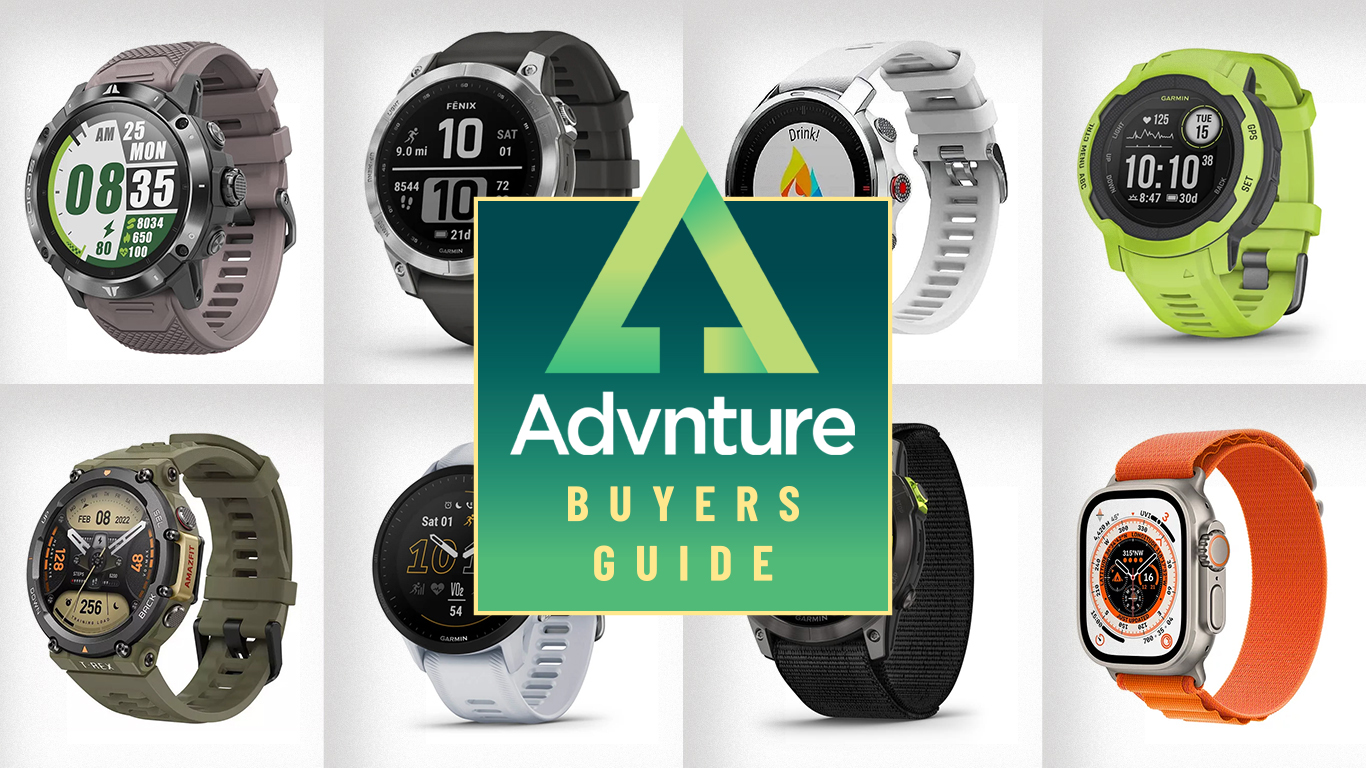
Whether you're navigating backcountry trails, planning a multi-activity adventure or taking your first steps on your fitness journey, a GPS watch or cheap GPS watch can be a game-changer. These smart timepieces can guide your routes, monitor your health and fitness, and help you keep safe in rural areas.
If you've not invested in one yet, you might be unsure if you actually need a GPS watch, but these progressive bits of tech are a valuable tool for all levels of adventurers – from neophytes to seasoned mountaineers. As are the best Garmin watches.
Currently using your phone to navigate? GPS watches are your best battery saver, and can record your route at the same time, creating a neat digital log of your trip to refer back to. There's also real-time tracking, to help pinpoint distance travelled and elevation – some models even boast an SOS siren in case you find yourself in distress.
With calorie and sleep-monitoring capabilities, you can optimize recovery between big days out, and use heart and blood oxygen monitors to improve your base fitness.
Like most technical gear, one watch won't suit everyone, so before you choose, consider what activities you'll use it for – trail running, hiking, multisport? – and what you're willing to spend.
One of the best field watches or the best running watches might fit your needs brilliantly, too.
Our outdoors experts put these GPS watches through their paces, wearing each one for a minimum of two weeks, taking them out regularly on the trails and monitoring downtime tools at home. Read on to discover their pick of the best.
The quick list
This list lets you quickly compare our top-rated GPS watches with one another, and lets you easily jump down the page to our full reviews
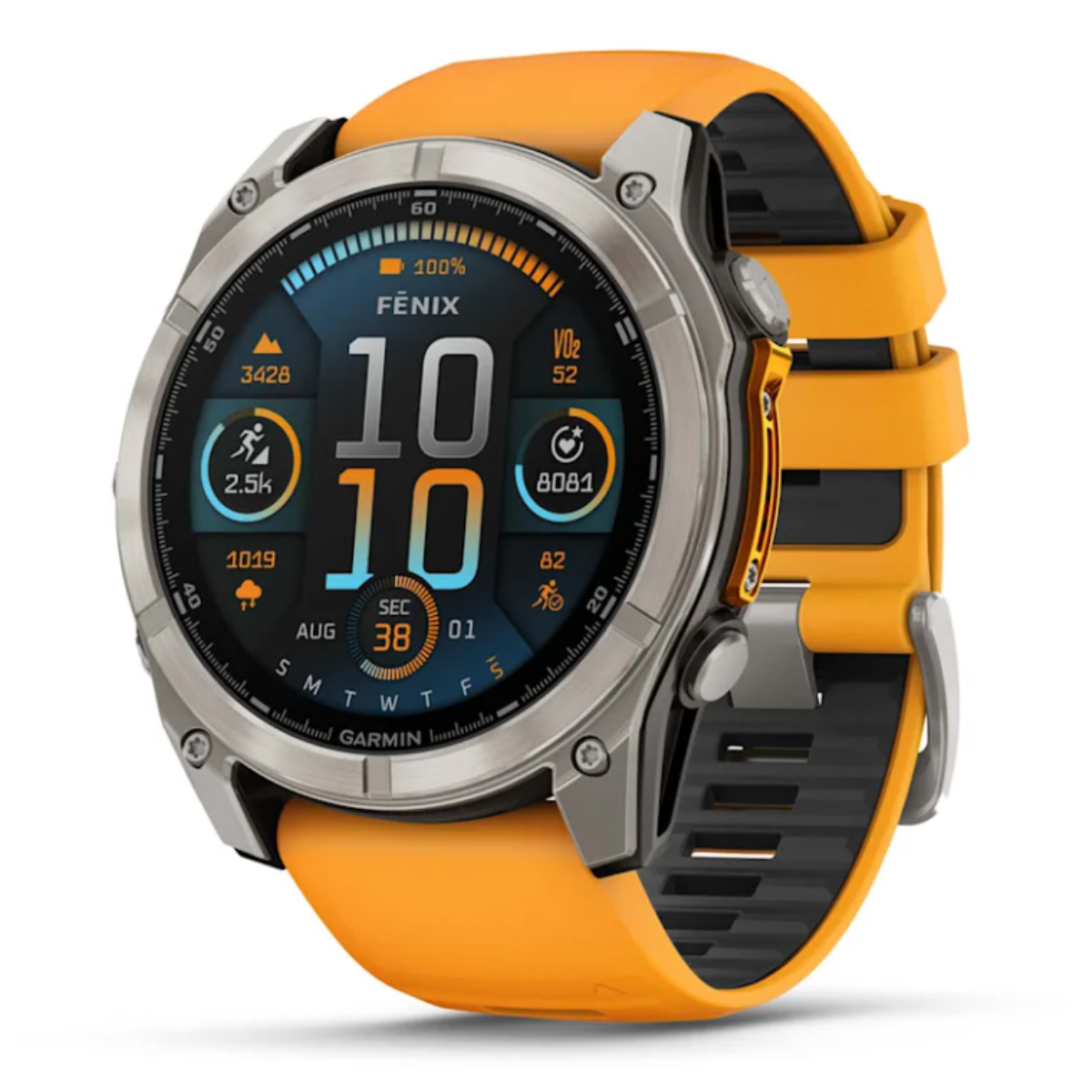
This incredible piece of tech builds on the already top-tier Fenix 7, with precise GPS, enhanced navigation and voice commands, making it ideal for serious outdoors folk. However, the price is eyewatering.
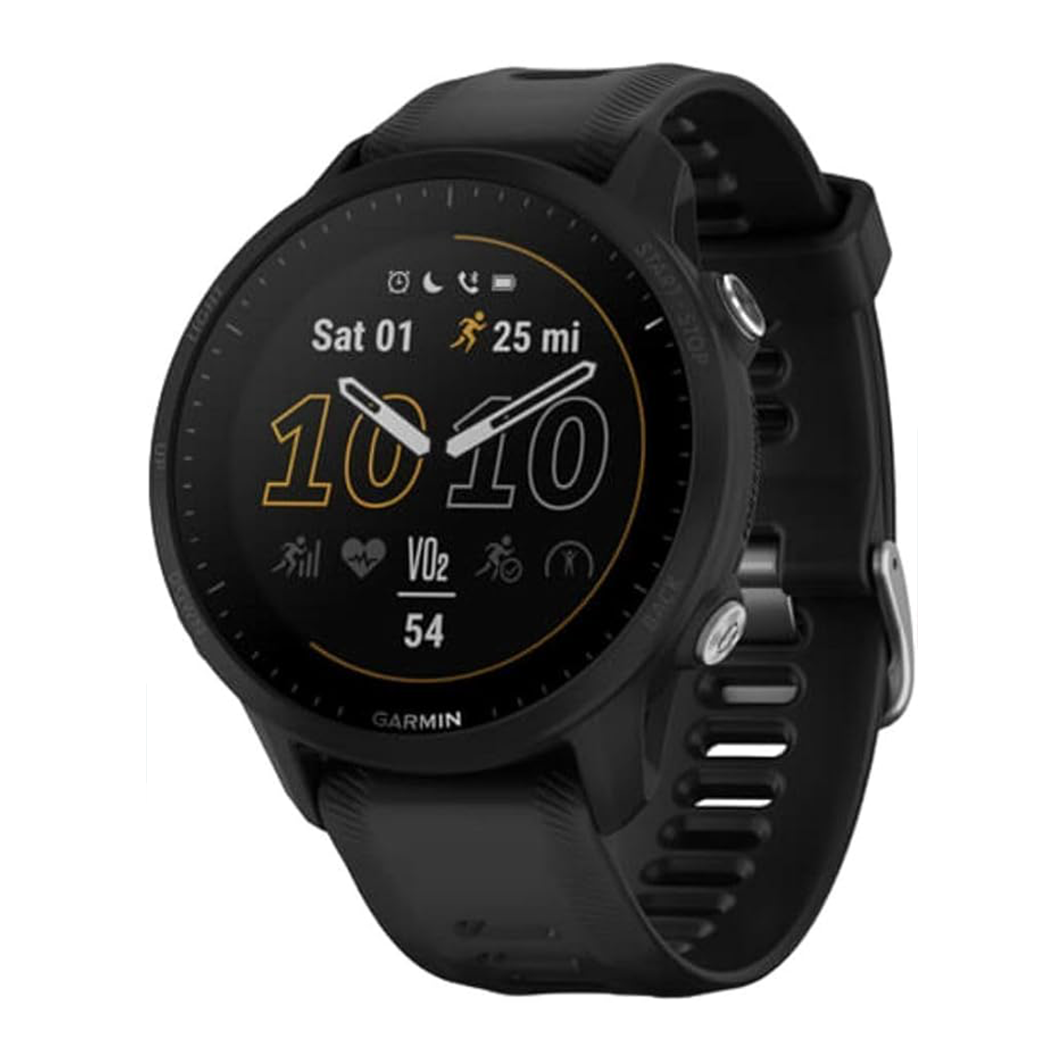
A super-accurate GPS watch packed with Garmin's best training tools for dedicated trail runners wanting to smash their personal records. It's lighter and more affordable than the Garmin Fenix 8.
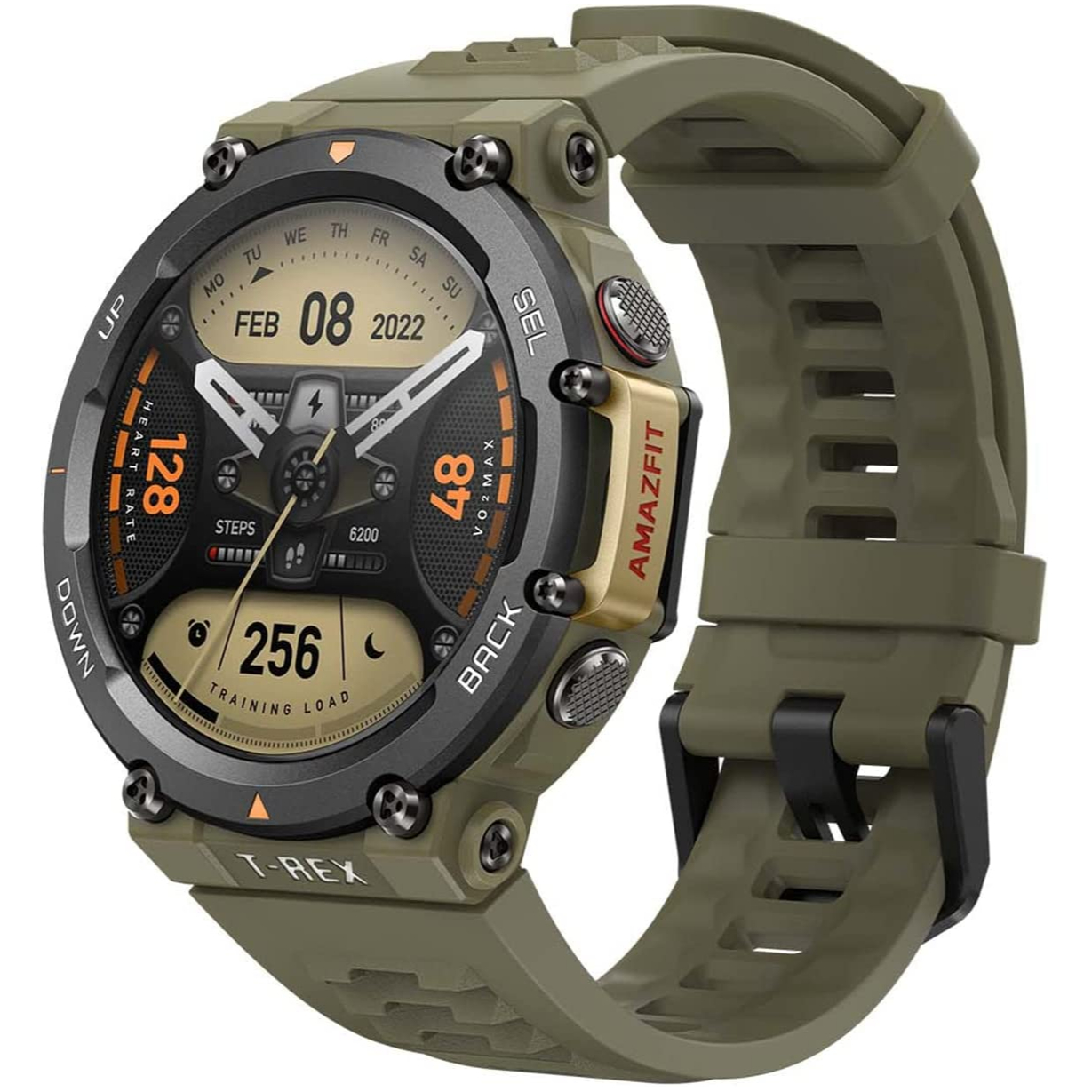
Want a rugged GPS watch for under $230? This is the one for you, with OLED display and battery life of up to 45 days. It's exceptional value for money.
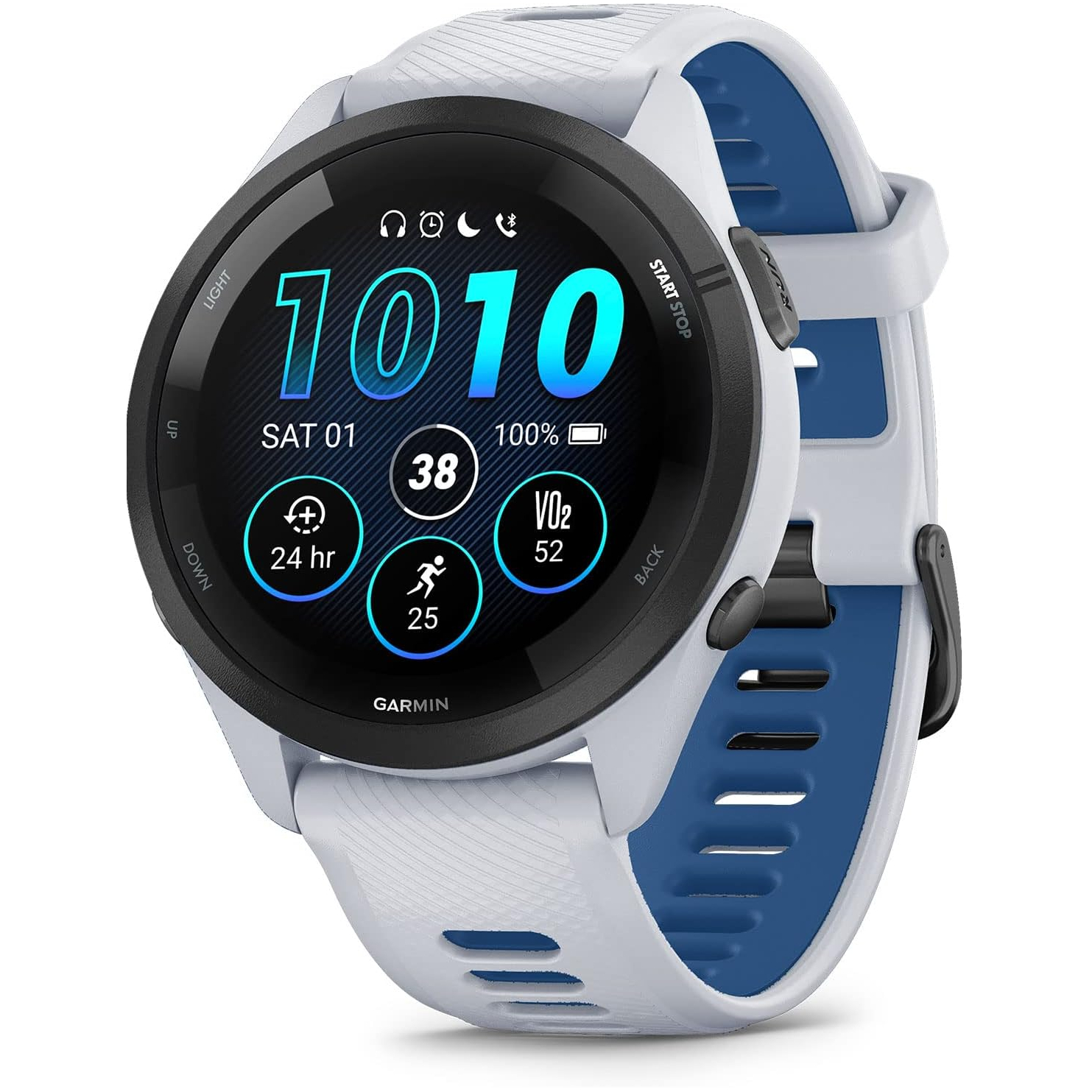
A feature-packed watch for new and intermediate level athletes, with super-accurate GPS, tools to help you train more effectively, and solid battery life. Everything is clearly laid out for beginners.
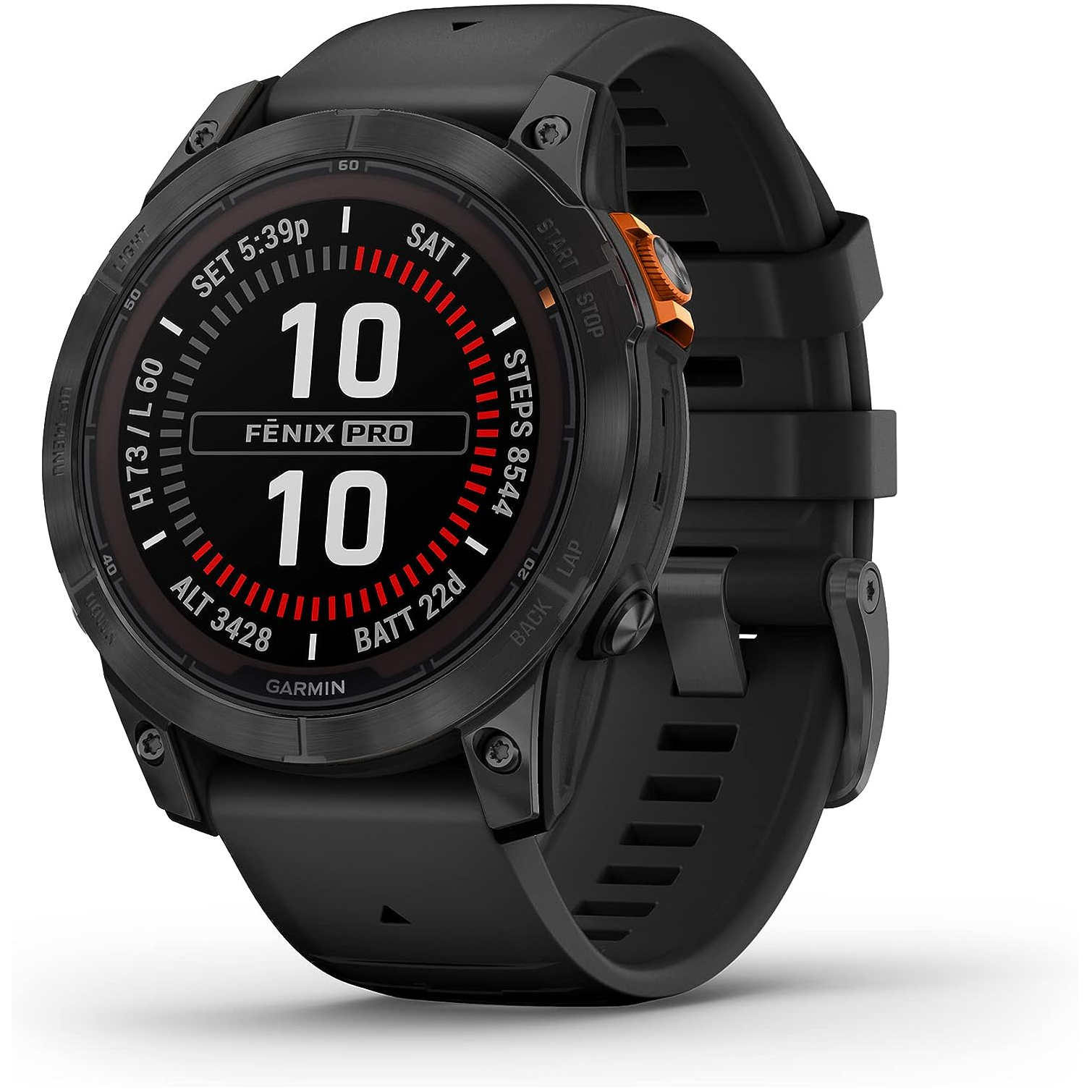
The Fenix 7 Pro's new heart rate monitor and training tools will help take your running to the next level. We particularly appreciated how easily it integrates with TrainingPeaks for guided workouts.
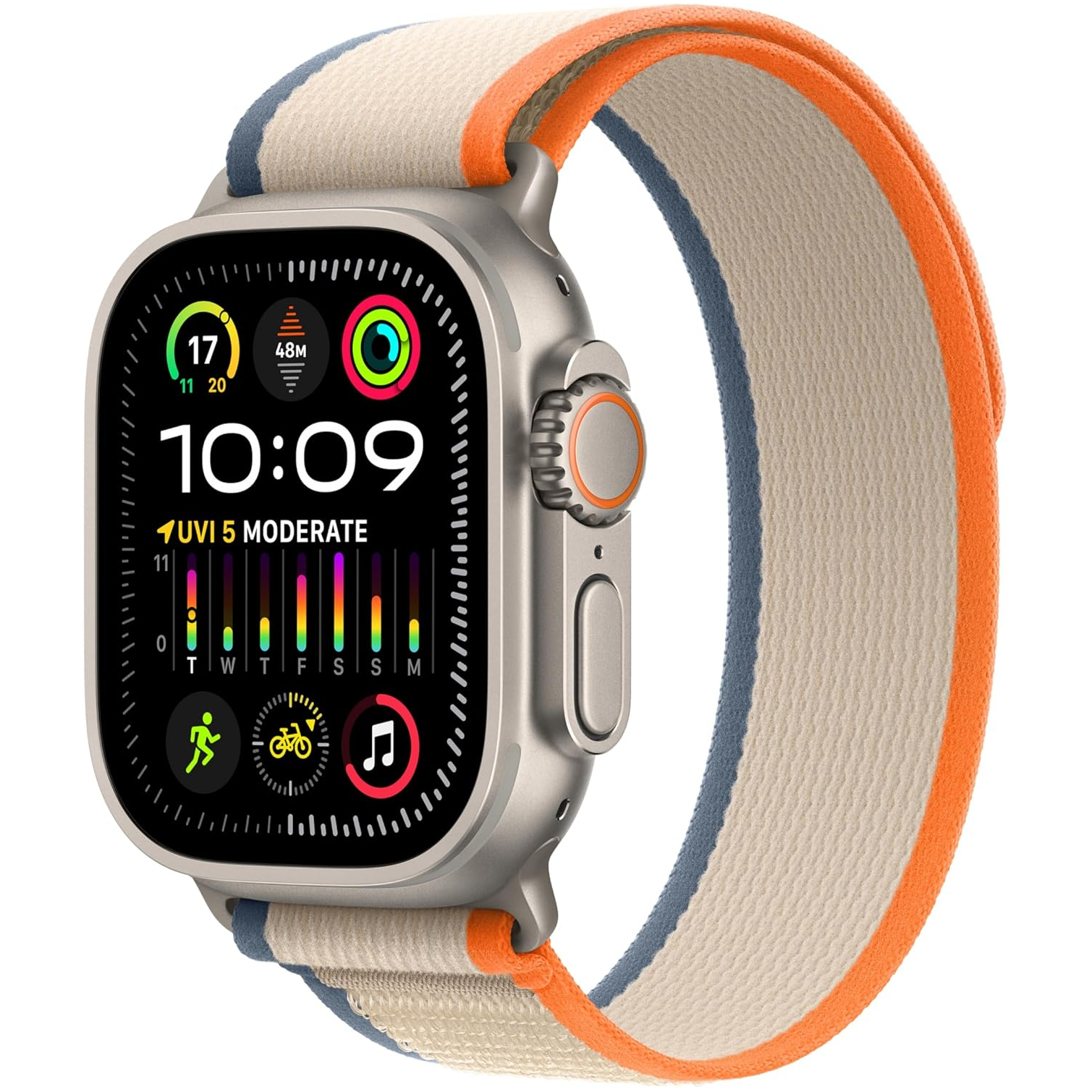
A GPS watch specially designed for outdoor adventures with super-fast GPS lock and excellent mapping. There are lots of third-party apps available to turn it into your perfect hiking companion.

An extra rugged Garmin watch with dual-band GPS that proves its worth in the wild. The increased screen size lets you see far more data at a glance than the original Garmin Instinct 2.
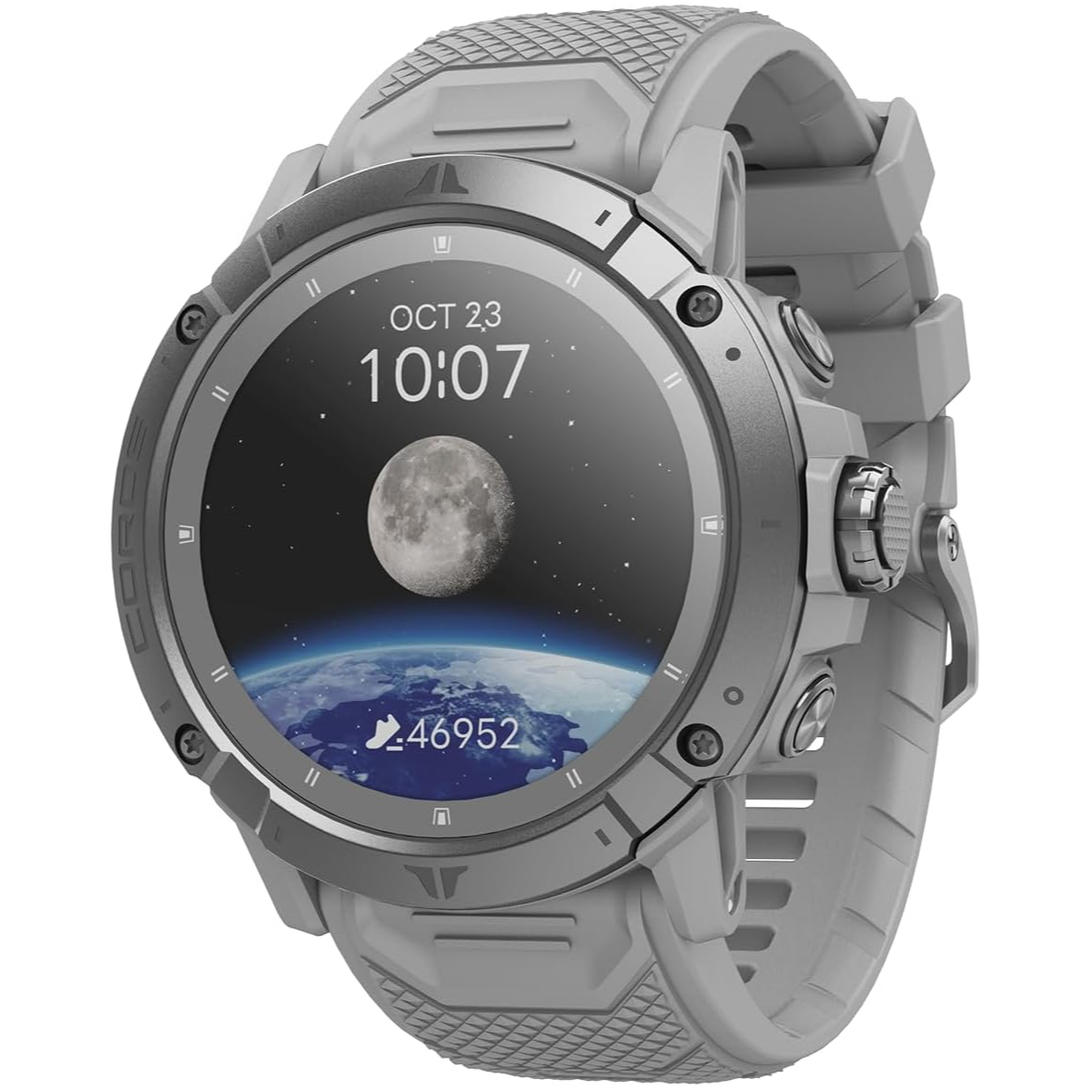
With a super tough build, extra long battery life and improved location tracking, the Vertix 2S is the ideal companion for climbers.
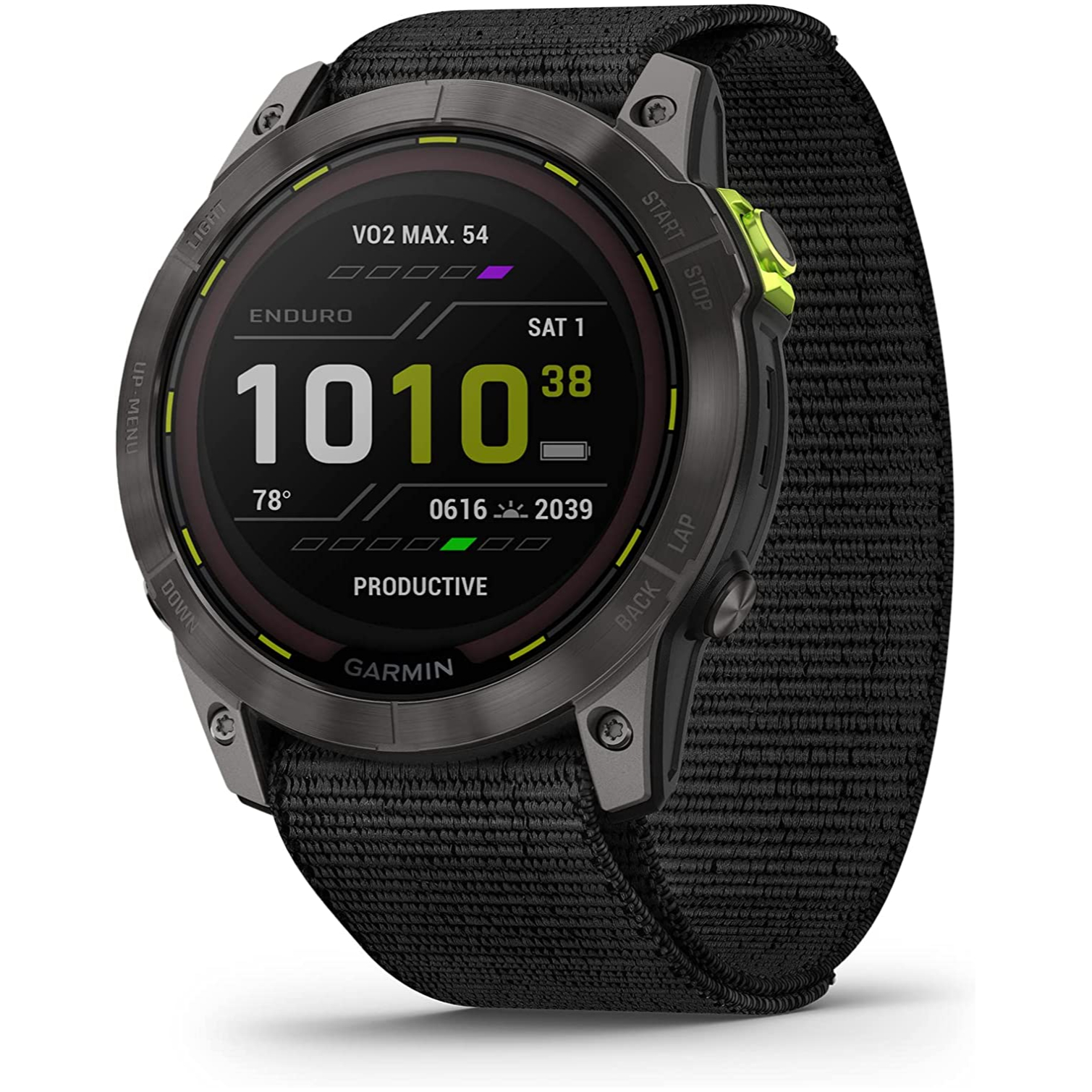
Heading on a multi-day event? The Enduro is the watch for you, lasting up to 150 hours in GPS tracking mode. The built-in LED flashlight is an excellent safety feature.
The best GPS watches comparison table
Watch | Price | Weight | Display type | Battery life: GPS / Standby |
Garmin Fenix 8 | $999 - $1,199 (US) / £949.99 - £1,119.99 (UK) | 2.1oz / 60g | AMOLED or Solar options | Up to 65 hours / up to 29 days |
Garmin Forerunner 955 | $499.99 (US) / £439.99 (UK) | 1.8oz / 52g | Memory-in-pixel | 42 hours / 15 days |
Amazfit T-Rex 2 | $229.99 (US) / £219 (UK) | 2.3oz / 65.8g | OLED | 50 hours / 24 days |
Garmin Forerunner 265 | $449.99 (US) / £379.99 (UK) | 1.4oz or 1.7oz / 39g or 47g | AMOLED | 24 or 20 hours / 15 or 13 days |
Garmin Fenix 7 Pro | From $699.99 (US) / £629.99 (UK) | 2.2oz or 2.8oz / 63g or 79g | Memory-in-pixel | Up to 122 hours / up to 1+ year |
Apple Watch Ultra 2 | $799 (US) / £849 (UK) | 61.4g / 2.2oz | AMOLED | Up to 36 hours normal use; up to 72 hours low power mode |
Garmin Instinct 2X Solar | $449.99 (US) / £339.99 (UK) | 2.4oz / 67g | Transflective display | 145 hours / unlimited |
Coros Vertix 2S | $699 (US) / £599 (UK) | 2.5oz / 70g (with nylon strap) | Memory-in-pixel | 118 hours / 40 days |
Garmin Enduro 2 | $999.99 (US) / £729.99 (UK) | 2.5oz / 70g | Memory-in-pixel | Up to 714 hours / up to 550 days |
The best GPS watches we recommend in 2025
You can trust Advnture
The best GPS watch overall
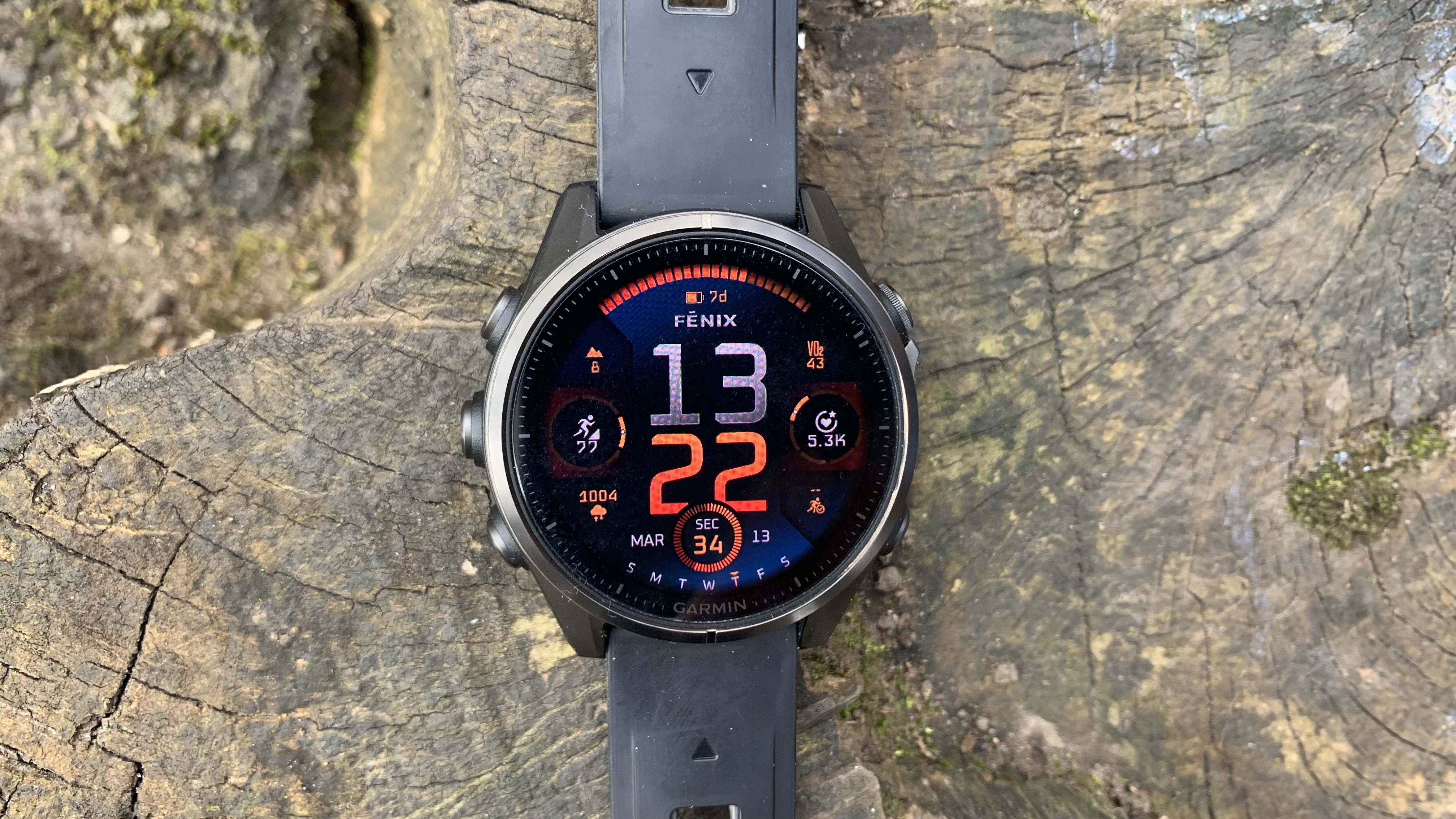
Specifications
Reasons to buy
Reasons to avoid
The Garmin Fenix 7 was a huge hit and touted as one of the best GPS watches of all time thanks to its suite of impressive tools for trail runners. So, how was the Fenix 8 going to build on it?
A first look reveals that the rugged design is still there – the watch is large and robust, great for durability, but less comfortable under long sleeves or when sleep tracking. As far as tech upgrades go, Garmin has added in extra navigation tools, voice commands and AMOLED display options, plus the ability to make and take phone calls. It has also upped the price substantially.
Improved heart rate sensors and GPS tracking are a boon on the trails, as are tools such as topographic mapping and 'Back to Start', which allows you to retrace your path once you've reached a midway point. There's even an All Satellite Mode, which gives greater accuracy, albeit with faster battery drain.
When it comes to training and fitness tools, you couldn't ask for more – the Fenix 8 is seriously packed: VO₂ Max, Race Predictor, Body Battery, HRV, Training Readiness Score, Abnormal Heart Rate Alerts, to name a few. The list is exhaustive, and will probably appeal most to serious athletes and dedicated technophiles.
It was our expert trail runner Julia Clarke's first experience of a Garmin watch, but despite being feature-packed, she found the intuitive interface easy to use and especially liked the mix of physical buttons and responsive touchscreen. She gave it five stars for its near-complete suite of navigation, training and smartwatch tools. However, she flags that it's definitely overkill for casual users.
Read our full Garmin Fenix 8 review
The best GPS watch for multi sport
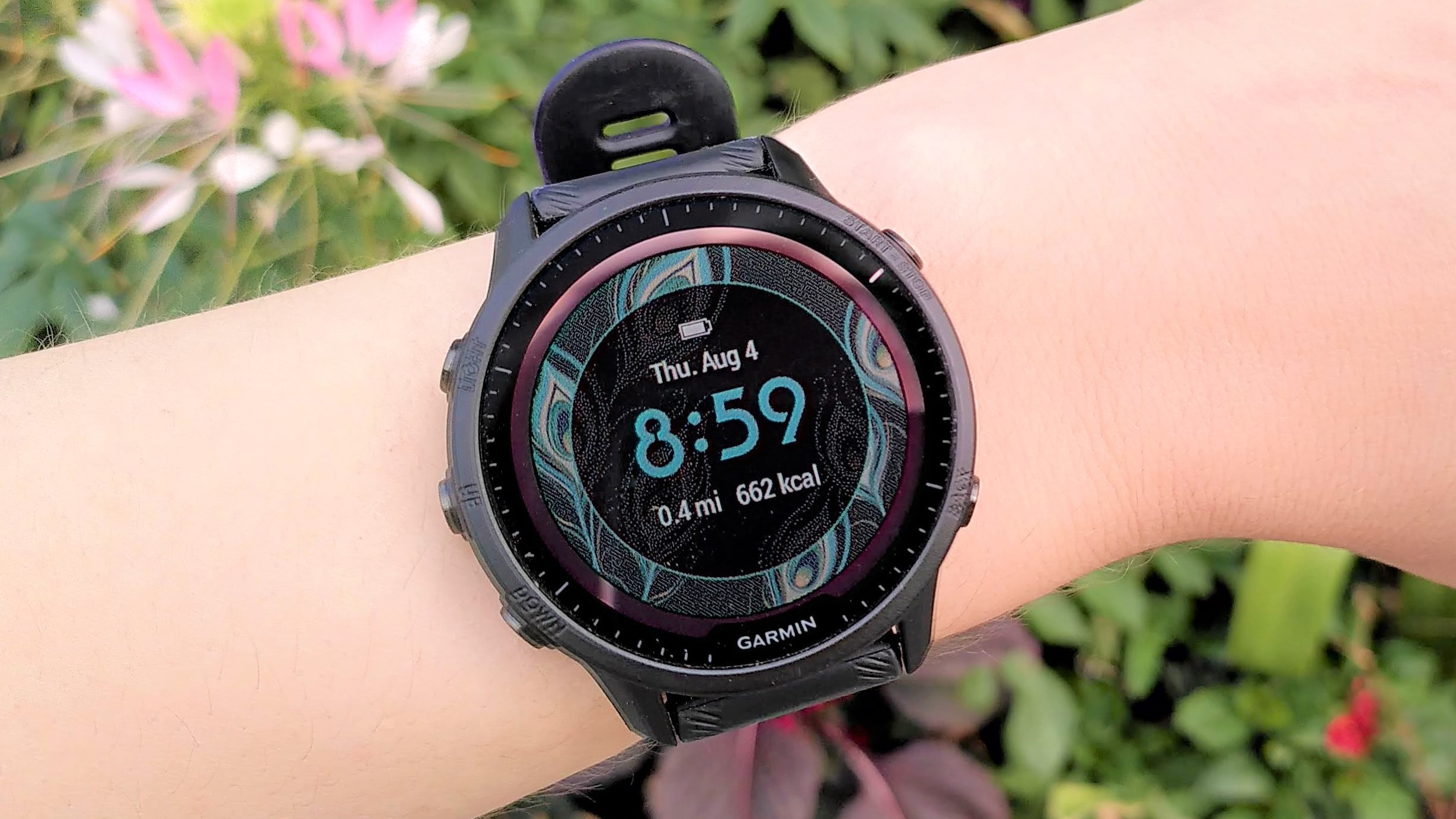
Specifications
Reasons to buy
Reasons to avoid
The Garmin Forerunner 955 doesn't look flashy, but it's one of the best GPS running watches you can buy right now. One of the biggest selling points is the incredibly accurate multi-band GPS, which can be set to switch to single-band mode in areas with good reception to conserve battery life. During a pre-measured 10km test run, it was accurate to within a couple of meters, despite the route taking expert tester Cat Ellis through two long tunnels.
The Forerunner 955 includes all of Garmin's latest tools as standard, including heart rate variability, training readiness, real time stamina, and much more. It gives you a truly comprehensive picture of your current fitness level, the impact of your workouts, and how you can adapt your training plan to achieve your goals.
Unlike its predecessor, the Forerunner 955 features both a touchscreen and buttons, but it's still extremely tough and so light that you'll easily forget you're wearing it (which is particularly important at night when it's tracking your post-workout recovery).
It is also available in a solar version, which gives battery life a boost provided you have access to regular doses of sunlight.
Read our full Garmin Forerunner 955 review
The best value GPS watch
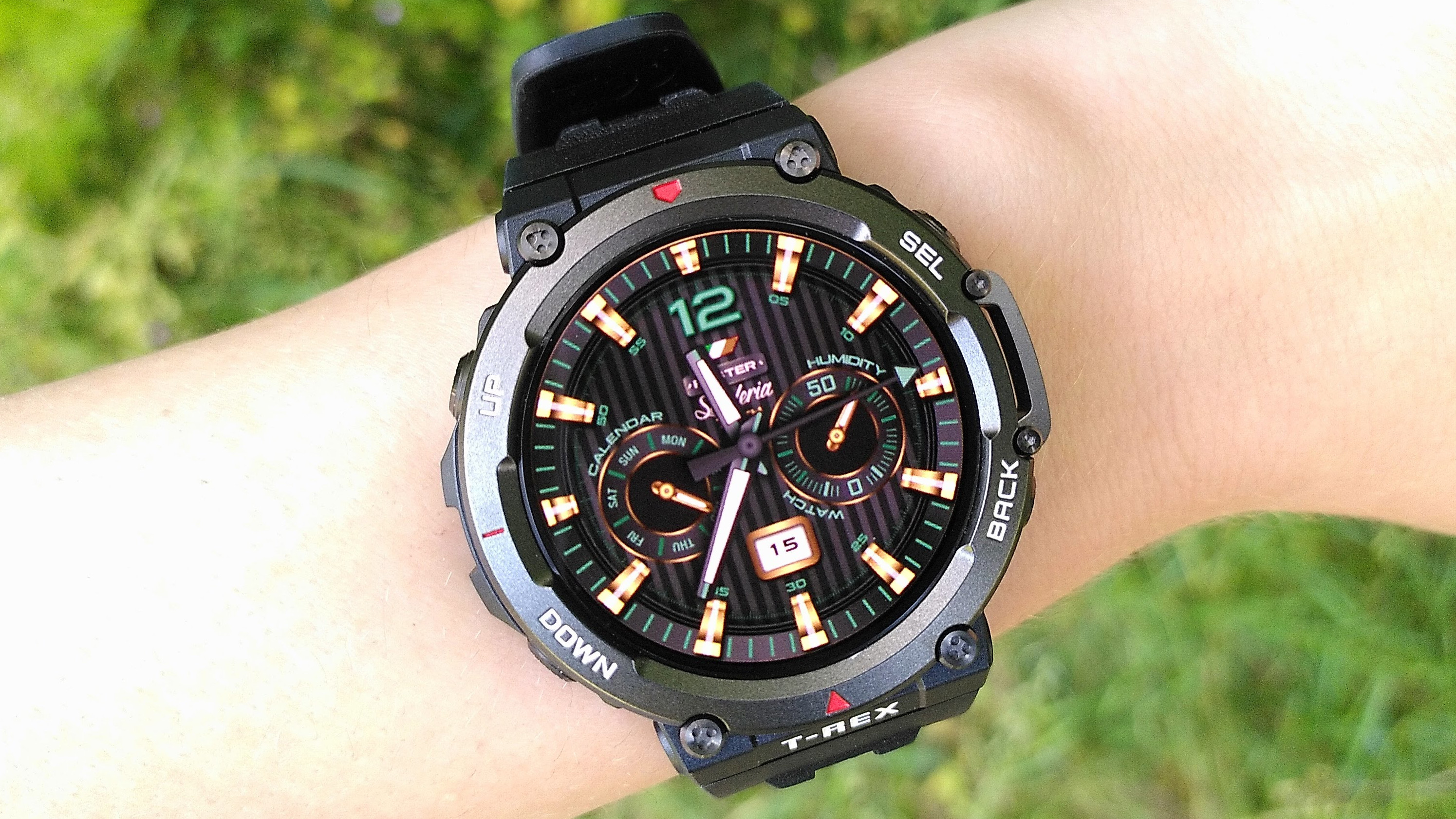
Specifications
Reasons to buy
Reasons to avoid
The Amazfit T-Rex 2 is less than half the price of some of its main rivals, but doesn't skimp on features, build quality, or accuracy.
In terms of design, it doesn't look that different to 2021's T-Rex Pro, but there are some smart changes like a new metal bumper to protect the 'start' and 'back' buttons. The real differences are on the inside, where there's a new higher-capacity battery that delivers up to 10 days of performance in regular heavy usage, or up to 45 days in power-saver mode (far more than most of its rivals).
It boasts a great-looking OLED display as well, and its multi-band GPS with support for all the major satellite systems locks on quickly to track your outdoor activities. Biometric monitoring is excellent too (and even tracks naps).
Our expert tester Cat Ellis's only real complaint was that the automatic workout detection didn't always detect when she'd started a run, meaning her training session wasn't logged. Provided you can remember to start tracking manually and you're willing to try something different to Polar, Garmin, and Coros GPS watches, you'll be very satisfied with the Amazfit T-Rex 2.
Read our full Amazfit T-Rex 2 review
The best GPS watch for new runners
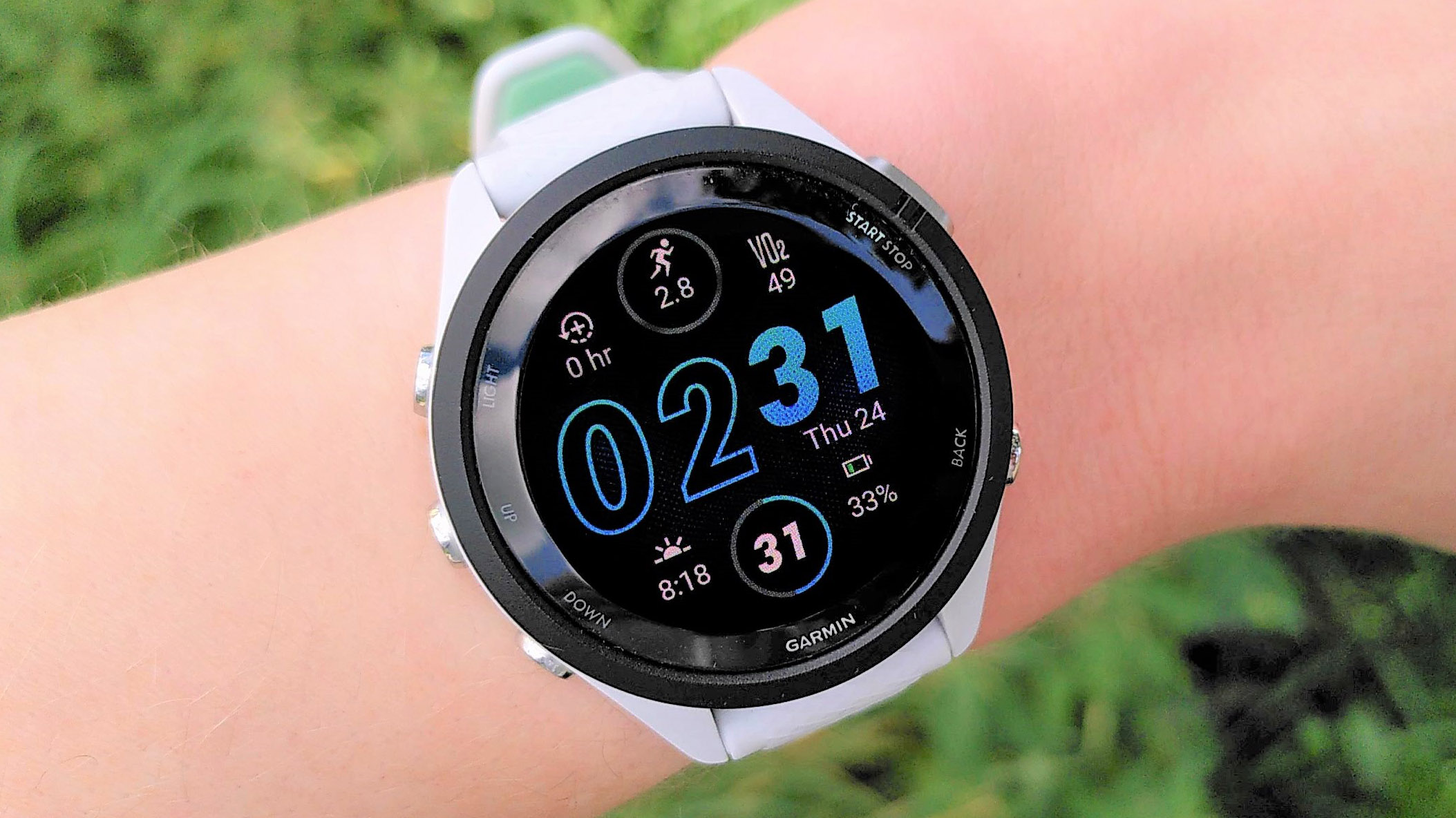
Specifications
Reasons to buy
Reasons to avoid
The Forerunner 265 is a great choice for beginner and intermediate level runners and triathletes thanks to its super accurate GPS, great looking screen, and accessible design that makes even the more advanced training tools easy to understand and use. It's very similar to the Forerunner 255 that launched in 2022, but with a new AMOLED touchscreen that makes it brighter, bolder, and easier to use.
Despite its modest price, the Forerunner 265 has an impressive set of sensors under the hood, and its GPS outshone most other sports watches our expert tester Cat Ellis had trialed. On her pre-measured 5km course, it plotted the route to within five meters, which is remarkable considering it was on roads rather than a track. It also gives you wrist-based running metrics, such as ground contact time, vertical oscillation, and cadence so you can see how your form changes as you fatigue, plus heart rate, speed, and elevation. Everything is presented neatly and clearly, with the upgraded screen making graphs easy to interpret at a glance.
The only real downside is that the Forerunner 265 doesn't support full maps. There are basic navigation tools, but for really exploring new areas you'll be better off upgrading to the Forerunner 955 or 965.
Read our full Garmin Forerunner 265 review
The best GPS watch for advanced runners
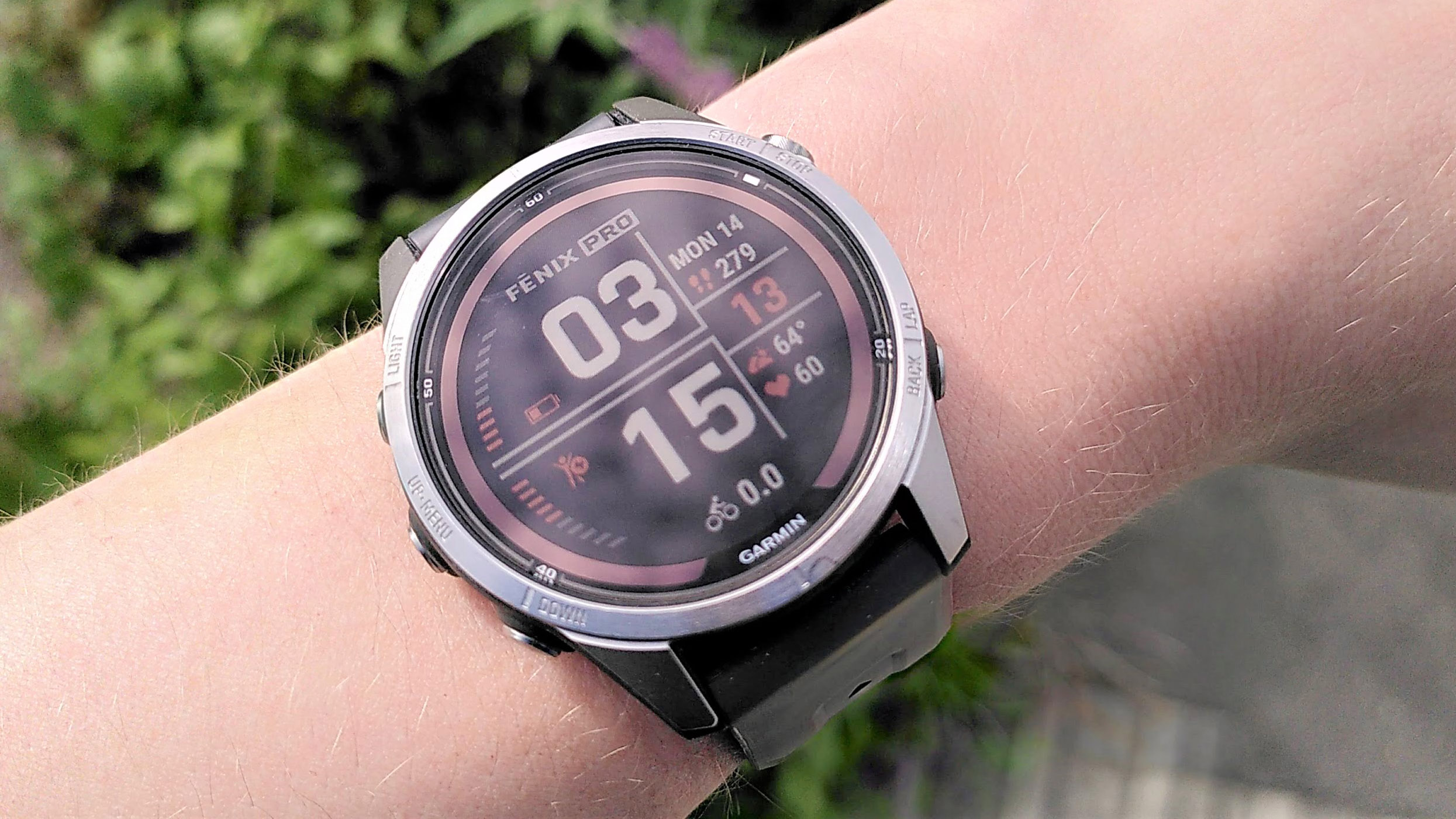
Specifications
Reasons to buy
Reasons to avoid
If you're interested in taking your running, cycling, swimming or hiking to the next level, the Fenix 7 Pro is the best GPS watch for you. It's very similar to the original Garmin Fenix 7, but with an upgraded heart rate sensor, an incredibly handy flashlight, and a handful of extra tools to help you train more effectively.
There are all the training tools a runner could wish for, including the ability to easily import workout plans from services like TrainingPeaks, wrist-based running dynamics, and a variety of tools that put your biometric data into a context that's easier to understand. For example, the new Endurance Score features uses various sources of long and short-term data to assess your ability to sustain long efforts, and see your progress over time.
GPS proved particularly accurate, and during an intense indoor cycling interval session, our running aficionado Cat Ellis found that changes in her heart rate were detected by the Fenix 7 Pro's updated sensor almost as swiftly as a chest strap heart rate monitor.
During her test she found that the watch's blue backlight tended to make colors look a little muddy, particularly when navigating using the watch's on-board maps and GPS, but that's a fairly minor complaint. If you'd prefer to have a watch with an OLED display, take a look at the Garmin Epix Pro, which is otherwise nearly identical.
Read our full Garmin Fenix 7 Pro review
The best GPS watch for hiking
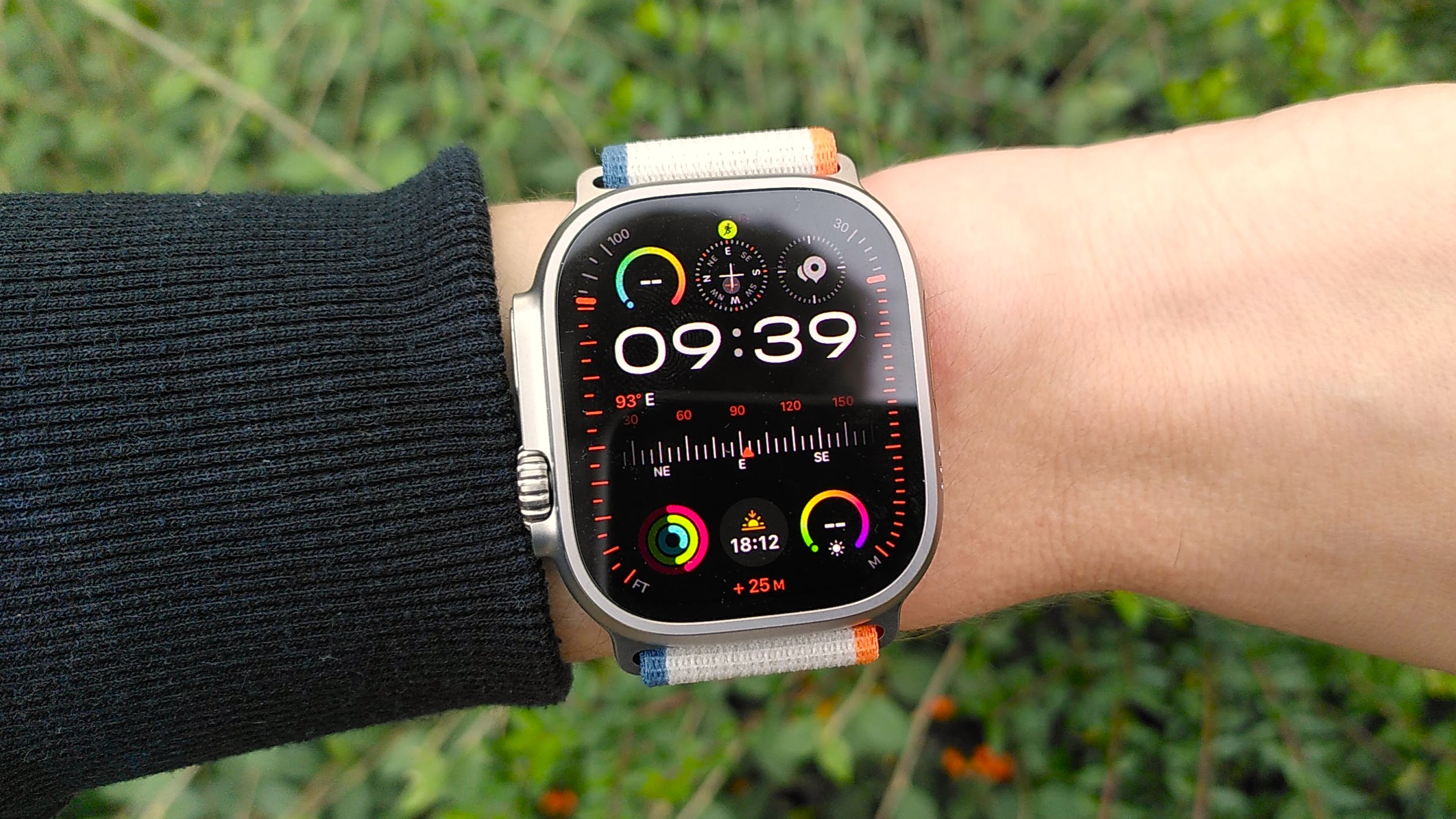
Specifications
Reasons to buy
Reasons to avoid
When it comes to sheer versatility, it's hard to beat the Apple Watch Ultra 2. It's impressive out of the box, with a great suite of fitness tracking tools and super accurate GPS, but our expert tester Cat Ellis found it really came into its own when kitted out with third-party apps like AllTrails and Komoot for finding and following routes.
The Apple Watch Ultra 2 looks identical to its predecessor at first glance, but its screen is significantly brighter, offering improved visibility in bright sunshine on the trail. Its multiple microphones are designed to compensate for wind noise when you're making a call (possible without a phone if you have a data plan), and there's an excellent digital compass installed by default.
There's also a new processor, which not only makes the overall experience of using the watch faster and smoother, but also facilitates Apple's new double-tap gesture. Hold the watch up and tap your index finger and thumb together twice to perform whatever action is currently displayed on the screen. Cat found it extremely helpful, particularly if you're carrying something in one hand and want to accept a call or dismiss a notification.
The limiting factor for the Apple Watch Ultra 2 is battery life. Apple itself says the watch should last around 36 hours in typical use, and you can eke it out further through careful use of power-saving options and limiting use of certain functions, but for extended camping trips, you might prefer something less flashy and power-hungry.
Read our full Apple Watch Ultra 2 review
The best GPS watch for camping
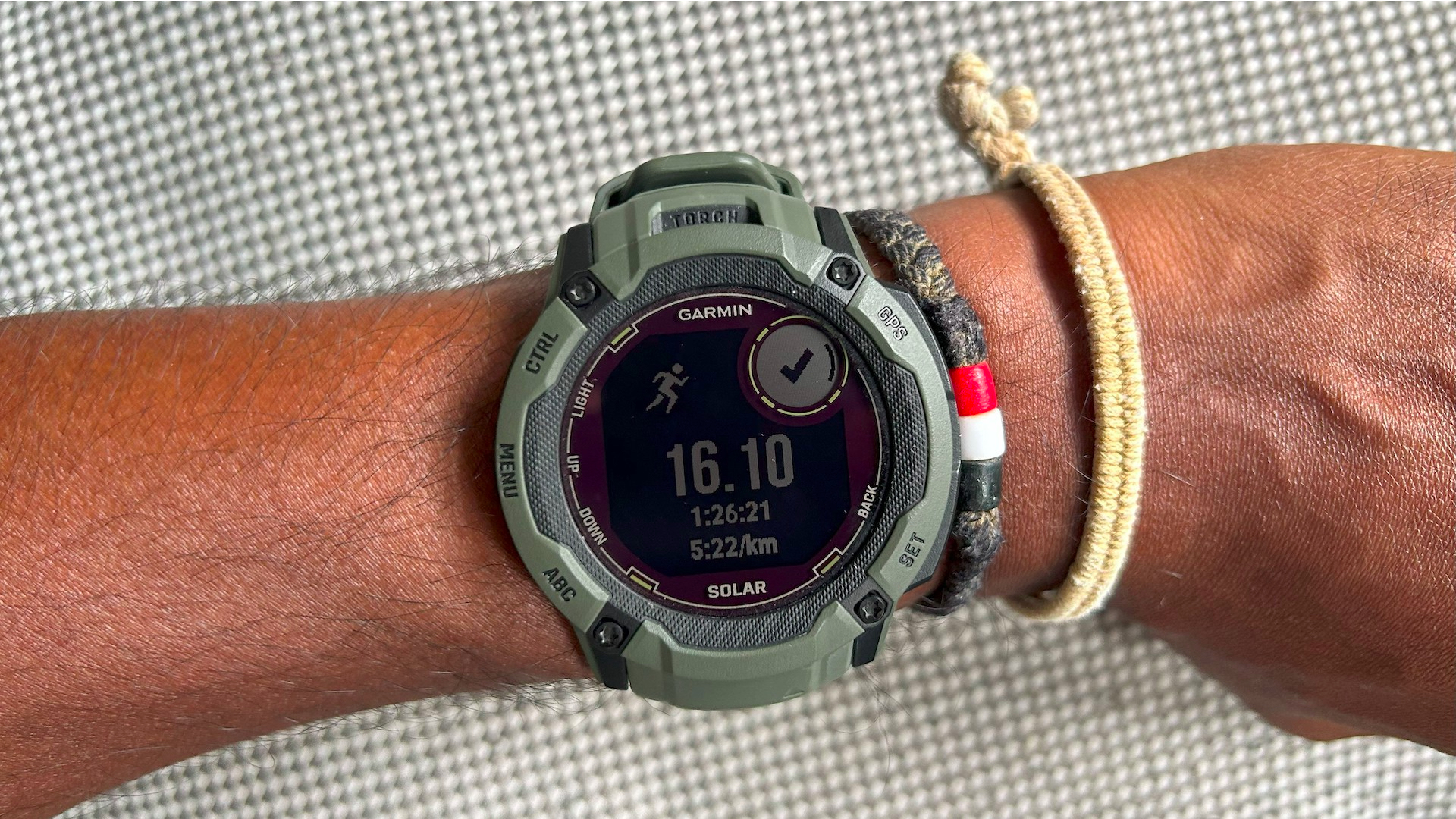
Specifications
Reasons to buy
Reasons to avoid
The Instinct 2X updates one of Garmin’s most popular GPS watches with a bigger display, a built-in flashlight, multi-band GPS, and an impressive battery life that will last you for weeks. If you're a fan of the original Instinct 2, but want something bigger and more rugged, the Instinct 2X delivers exactly that – and more.
In fitness addict Michael Sawh's tests, he found the newly added multi-frequency GPS really did deliver the improved accuracy you need in places such as tall, wooded areas. He used the Instinct 2X alongside the Forerunner 965 and found data by large was very consistent, and the metrics attached to that improved positioning data. It uses more power, but is worth it when you're out exploring, and battery life is still excellent with it enabled.
The new flashlight, accessed via the top left button, is more than just a gimmick, offering a surprisingly bright light to work by. Michael only wished that the Instinct 2X had a higher screen resolution for more detail and proper support for mapping to help him navigate in the wild.
Read our full Garmin Instinct 2X Solar review
The best GPS watch for climbing
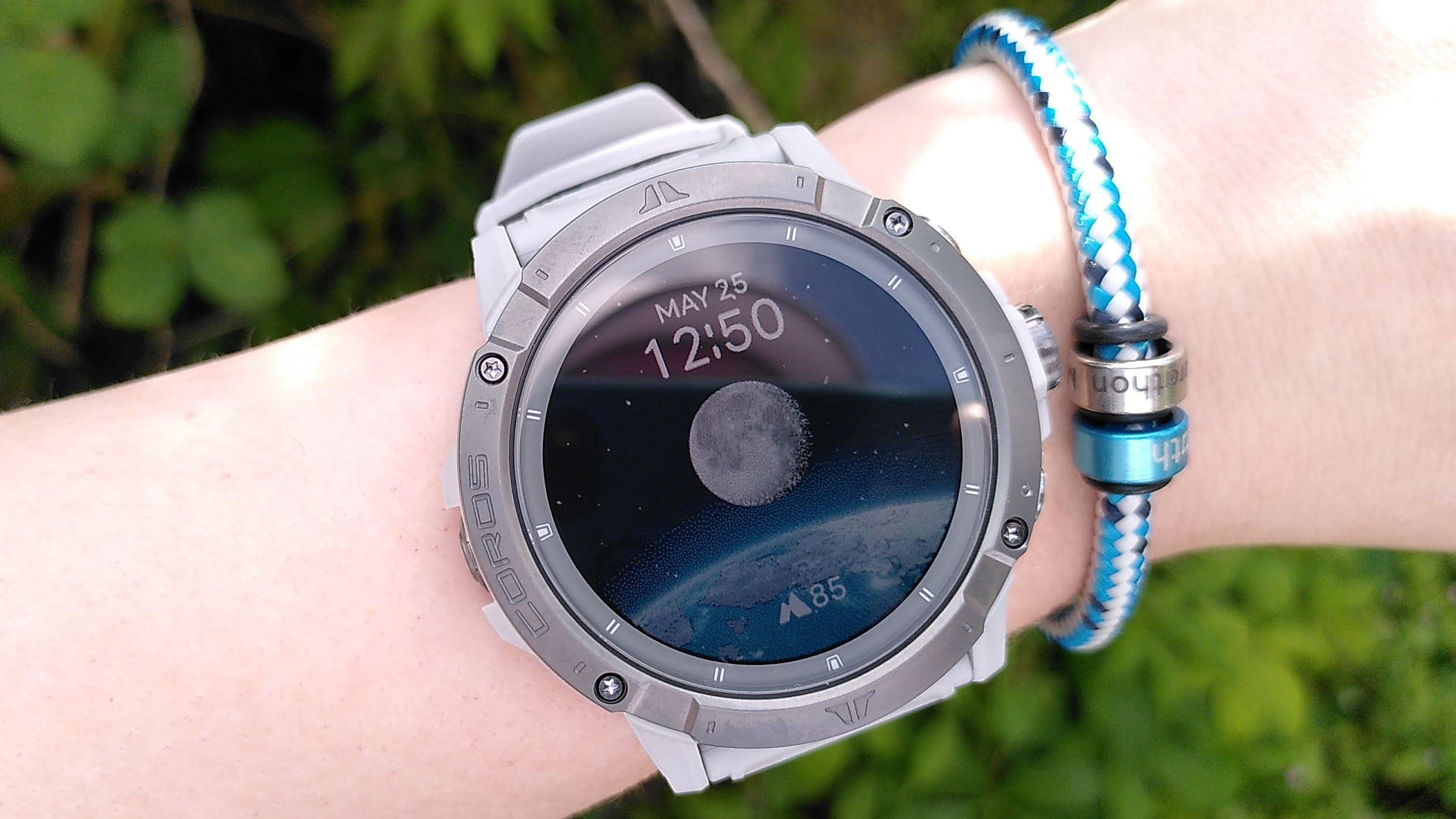
Specifications
Reasons to buy
Reasons to avoid
The Coros Vertix 2S is the best GPS watch for climbing, particularly if you're headed outdoors to do so. Not only does it offer multiple climbing modes, it features an updated location tracking algorithm to help pinpoint your location on the rock face where other watches may fail. It's a boon for runners too, and during our expert cat Ellis's testing, it proved accurate.
The Vertix 2S (a successor to the excellent Vertix 2) also has an upgraded heart rate monitor with additional LEDs and light sensors to more accurately track biometric data, providing improved fitness and recovery metrics in the Coros app.
This is a chunky GPS watch, but not excessively heavy, and it's seriously tough. With a resin case, titanium bezel, and sapphire crystal glass over the lens, it won't be easily scuffed or scraped when you're on the crag. For full peace of mind, you can even clip it into the Coros Vertix 2 Carabiner (sold separately) and hang it from your harness instead.
Read our full Coros Vertix 2S review
The best GPS watch for ultra marathons
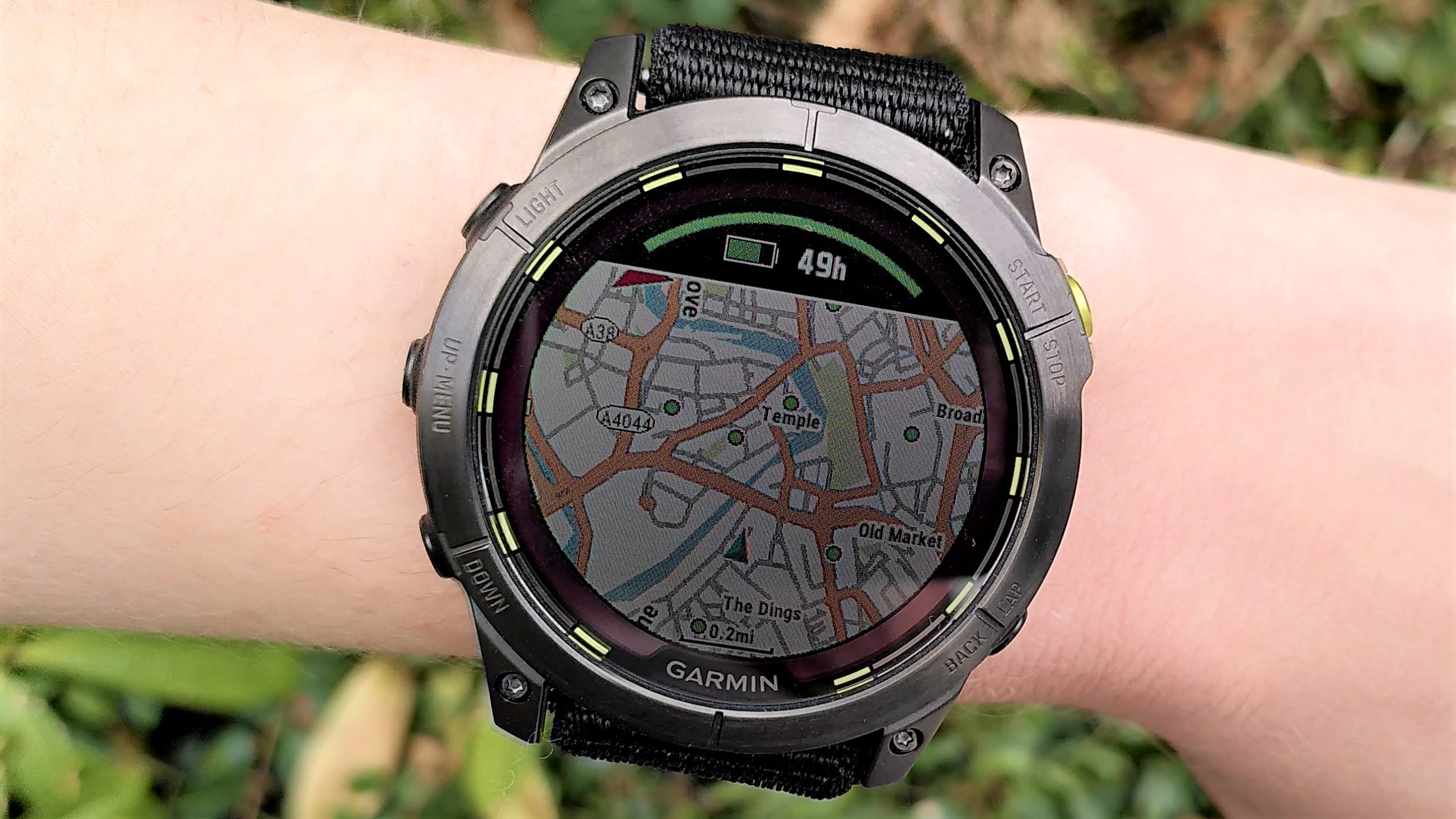
Specifications
Reasons to buy
Reasons to avoid
The Garmin Enduro 2 was built with ultra-runners in mind, which means it's also a superb GPS watch for hikers. If you're embarking on a multi-day event, this watch's huge solar cell means there's no need to worry about charging it regularly, even when you're using GPS tracking for hours at a time.
You're also getting all the advanced training tools you'd expect from a top-tier Garmin watch, including real-time stamina monitoring, race time predictions, detailed recovery metrics, heart rate variability, training readiness, and a remarkably detailed breakdown of your performance after each training session and event.
The build quality is extremely solid as well, and the chunky titanium bezel gives it a real premium feel. This is a GPS watch that gets you noticed, in a good way (it even has a built-in flashlight).
The biggest downside is the price. This is one of Garmin's most expensive watches, and although it's easy to see why, it's worth taking a good look at the Polar Grit X Pro and Amazfit T-Rex 2 before dropping all your cash on it. The original Garmin Enduro came in a slightly cheaper steel edition, but this time it's titanium all the way.
Read our full Garmin Enduro 2 review
How we test GPS watches
We test each GPS watch for at least two weeks so the watch and its companion app have time to build up a full picture of our health and fitness. We wear each watch day and night so we can assess its sleep and recovery tools, and compare its results against those from a Withings Sleep Analyzer sleep tracker.
To test each watch's GPS, we take it for several runs and walks in a variety of locations, including built-up areas, open fields, and wooded areas that present a challenge of satellite navigation. We also take each watch on a pre-measured route to see how accurately it records distance.
To test the accuracy of each GPS watch's heart rate monitor, we put it to the test in a series of intense interval training sessions and compare its results to those from a chest strap heart rate monitor, which serves as a benchmark.
For more details see how Advnture tests products.
Meet the testers
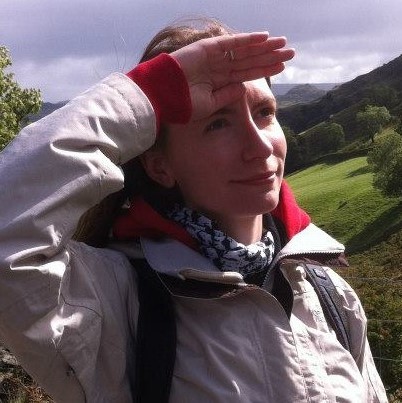
Cat has been testing GPS watches for years, having previously worked as fitness editor for Advnture's sister site TechRadar, and can usually be found running or hiking with one on each wrist (though she hasn't resorted to ankles yet).

Julia Clarke is Advnture's Senior Staff Writer and most days you can find her out on the trail hiking or trail running with a GPS watch. She likes testing watches from all different brands, but she especially loves something adventure-focused watch with maps that she can use to navigate in the backcountry.

Michael is a freelance journalist who specializes in wearable and fitness tech. With a focus on fitness trackers, headphones, running wearables, phones, and tablet, he has written for numerous publications, including Wired UK, GQ and Men's Fitness. He is a runner with a number of marathons under his belt, and is also the co-founder of YouTube channel The Run Testers.
How to choose a GPS watch
All of the best GPS watches share some common, basic features, including time, pace, distance and workout tracking. But that’s where the similarities end. Every GPS watch is slightly different based on its feature package, battery life and intended end-use, so it’s important to understand the features you want and need in order to maximize a watch and get the most out of it.
What's your budget?
The first thing to consider when buying a GPS watch for trail running, hiking or general outdoor adventures is the price range of watches and your budget. There are generally three price ranges that watches fall into: basic ($150 and below), mid-range ($200-$350) and high-end ($350 and higher). Many mid-range and high-end watches have accessories that are sold separately, but for the purposes of understanding your own budget and what you’re willing to spend, those three categories are good guidelines.
How much should you spend? Only you can decide that, but without trying to sound cliché, you get what you pay for. In other words, a basic-level watch will offer limited overall functionality, while a high-end watch will offer a lot more sports-specific features.
How smart do you want it to be?
While almost any GPS watch will provide you with real-time pace, distance and elapsed time data, mid-range and high-end watches will also offer features like heart rate monitors, built-in workouts, touch-screen interfaces, waterproof construction (instead of just water-resistant), mapping features, elevation data, auto-pause function, temperature, barometric pressure, calorie burning and a variety of training functions.
Some watches have very good music-playing capabilities, but most have no music functions at all. Battery life is another one of the key factors to consider as it can vary greatly among watches. Other key features to be aware of include the ability to upload data and cross-analyze it with previous workouts or adventures, download and interface with other apps, and sport-specific workouts.
What activities will you use it for?
Do you want a GPS watch for one sport or one activity? Some watches offer functionality for one main end-use, but have limited features for other sports. For example, a GPS watch built for road and track running might not have as many specific features for trail running.
Some watches that excel as hiking or adventure watches will suffice for trail running but not as well for runners who are primarily focused on marathon training.
Some watches are touted as “multisport” watches with triathlon-oriented features for swimming, biking and running, including workouts and special bike-mounting accessories.
While some basic functions can overlap to other activities, the more specific your needs are, the more you have to look for those features when you’re shopping for a watch.
FAQs
Do I need a GPS watch?
While at one time GPS watches were the reserve of the professional sports person or adventure guide, the availability, affordability and myriad features they can now offer have widened the appeal.
As well as helping keep you on course in the wild, tracking routes, distance and elevation, they can help you make the most of your fitness sessions and optimize recovery time.
They can act as a navigation guide, and are also good safety tools, some having SOS capabilities. Check out our feature, Do you really need a GPS watch for hiking?, to help you decide if it's time to invest.
Do GPS watches work without a phone?
The most innovative GPS watches can do an awful lot without a phone. With a GPS receiver it can track your runs, bikes and hikes by communicating with satellites to work out your location.
Navigation capabilities can vary greatly with price. More budget-friendly options will track your path and allow you to retrace your steps. Some allow you to download areas of maps for offline, phone-free use. Higher up the price ladder, you can create routes on another device, then sync with your phone. Some watches allow you to fully program in routes without a phone involved.
There are some watches, however, that do not have a GPS receiver built-in and rely on a phone connection for GPS data.
What's the difference between a GPS watch and cellular watch?
Essentially, the main difference between a GPS and a cellular watch is that a cellular watch allows you to make calls, send messages and even lets you steam music directly from your wrist without connecting to your phone.
A GPS watch uses a network of satellites to pinpoint your position, while a cellular watch can use mobile networks too.
A GPS should cost you less than a cellular watch, and it should also give you a longer battery life. You’ll need to pair it to your smart phone if you want to activate cellular features.
Can GPS watches be tracked?
Most GPS devices use satellites to receive location information only. But you can enhance the safety of your adventures by using a companion app to share your location in real time with others.
How accurate is a GPS watch?
To find the best GPS watches and the best cheap GPS watches, we put them to the test on runs and hikes in locations that can prove challenging for satellite navigation – including wooded and built-up areas. We also test the accuracy of the heart rate monitors, comparing results to those from a chest strap heart rate monitor.
All the latest inspiration, tips and guides to help you plan your next Advnture!
Julia Clarke is a staff writer for Advnture.com and the author of the book Restorative Yoga for Beginners. She loves to explore mountains on foot, bike, skis and belay and then recover on the the yoga mat. Julia graduated with a degree in journalism in 2004 and spent eight years working as a radio presenter in Kansas City, Vermont, Boston and New York City before discovering the joys of the Rocky Mountains. She then detoured west to Colorado and enjoyed 11 years teaching yoga in Vail before returning to her hometown of Glasgow, Scotland in 2020 to focus on family and writing.
- Cat EllisEditor
- Charlie LyonAdvnture contributor
- Michael SawhFitness tech journalist

